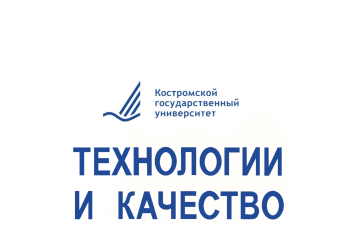- 1
- FUNCTIONAL MATERIALS WITH MOISTURE FLOW MANAGEMENT PROPERTIES FOR SPORTS AND SPECIAL PURPOSE CLOTHING
- Functional materials with moisture flow management properties for sports and special purpose clothing / A. V. Abramov, V. V. Kurguzov, N. N. Utkin, M. V. Rodicheva. Technologies & Quality. 2024. No 2(64). P. 5–12. (In Russ.). https://doi.org/10.34216/2587-6147-2024-2-64-5-12.
- DOI: https://doi.org/10.34216/2587-6147-2024-2-64-5-12
- УДК: 677.017.632:687.14
- EDN: BTQBCE
- Publish date: 2024-05-24
- Annotation: The results of the analysis of functional materials with the property of controlling moisture flows in a clothing package are presented. It has been shown that in modern developments the transfer vector is formed due to the surface energy gradient or capillary potential. It has been established that all developments can be classified according to the type of transfer mechanism. Moisture transfer due to Marangoni flows in textile materials is ensured by: a combination of natural and synthetic raw materials; applying water-repellent and hydrophilic coatings to the surface of the material; use of membranes. The organization of a capillary potential gradient in textile materials is associated with a change in surface density along the thickness. A number of images use a combination of these approaches. For each of the selected classes, trademarks of materials that are available on the modern textile market are presented.
- Keywords: control of moisture flows, contact angle, surface tension, knitwear, capillary potential, Marangoni flow, surface energy, membrane, electroosmosis
- Literature list: 1. Islam R., Golovin K., Dolez P. Clothing Thermophysiological Comfort: A Textile Science Perspective. Textiles. 2023;3(4):353–407. 2. Faheem A., Khurram S., Wardah A., Bushra M., Abher R. Sheraz A., Farooq A., Yasir N. Recent Devel-opments in Materials and Manufacturing Techniques Used for Sports Textiles. International Journal of Polymer Science. 2021;2023(1):2021622. 3. Koshcheev V. S. Fiziologiya i gigiena individual’noj zashchity cheloveka ot holoda. Мoscow, Meditsina Publ., 1981. 288 s. (In Russ.) 4. Lykov A. V. Teoria suschki. Moscow, Energiya Publ., 1968. 472 s. (In Russ.) 5. Lee H., Fermin D., Corn R., Girault H. Marangoni flow in micro-channels. Electrochemistry Communica-tions. 1999;1:190–193. 6. Fu K., Yang Z., Pei Y., Wang Y., Xu B., Wang Y., Yang B., Hu L. Designing textile architectures for high energy-efficiency human body sweat- and cooling-management. Advanced Fiber Materials. 2019;1:61–70. 7. Su C., Fang J., Chen X., Wu W. Moisture absorption and release of profiled polyester and cotton compos-ite knitted fabrics. Textiles Research Journal. 2007;77:764–769. 8. Moretz H., Brier D. Multi-layer moisture management elastic fabric. US 5297296A. Priority to US 1992.12.17. Publication 1994.03.29. 16 p. 9. Women’s performance zip-up hoodie. URL: https://www.polartec.com/partners/products/nobull-womens-performance-zip-up-hoodie (accessed 08.05.2024). 10. What Is Moisture Wicking? URL: https://www.nike.com/be/en/a/what-is-moisture-wicking (accessed 08.05.2024). 11. Zeng C., Wang H., Zhou H., Lin T. Directional water transport fabrics with durable ultra-high one-way transport capacity. Advanced Materials Interfaces. 2016;3(14):1600036. 12. Nazir A., Hussain T., Abbas G., Ahmed A. Effect of design and method of creating wicking channels on moisture management and air permeability of cotton fabrics. Journal Natural Fibers. 2015;12:232–242. 13. Miao D., Huang Z., Wang X., Yu, J., Ding B. Continuous, Spontaneous, and Directional Water Transport in the Trilayered Fibrous Membranes for Functional Moisture Wicking. Small. 2018;14(32):1801527. 14. Dou Y., Tian D. Inspired Crossflow for Efficient and Continuous Collection of Spilled Oil. ACS Nano. 2017;11:2477–2485. 15. Zou C., Lao L., Chen Q., Fan J., Shou D. Nature-inspired moisture management fabric for unidirectional liquid transport and surface repellence and resistance. Energy Building. 2021;248(7):111203. 16. Kharapudko Yu. V., Timoshina Yu. A., Voznesensky E. F. Analysis of structural changes of modified polyethylene films by differential scanning calorimetry. Tehlonogiii i kachestvo [Technologies & Qual-ity]. 2022;1(55):5–11. (In Russ.) 17. Pankevich D. K., Burkin A. N. Methodology for evaluating the properties of waterproof clothing materi-als. Tehlonogiii i kachestvo [Technologies & Quality]. 2022;2(56):5–10. (In Russ.) 18. Dai B., Li K., Shi L., Wan X., Liu X., Zhang F., Jiang L., Wang S. Bioinspired Janus Textile with Coni-cal Micropores for Human Body Moisture and Thermal Management. Advanced Materials. 2019;31(41):1904113. 19. Zhang Y., Tian M., Wang L., Zhao H., Qu L. Flexible Janus textile-based electroosmotic pump for large-area unidirectional positive water transport. Advanced Materials Interface. 2020;7(13):1902133.



